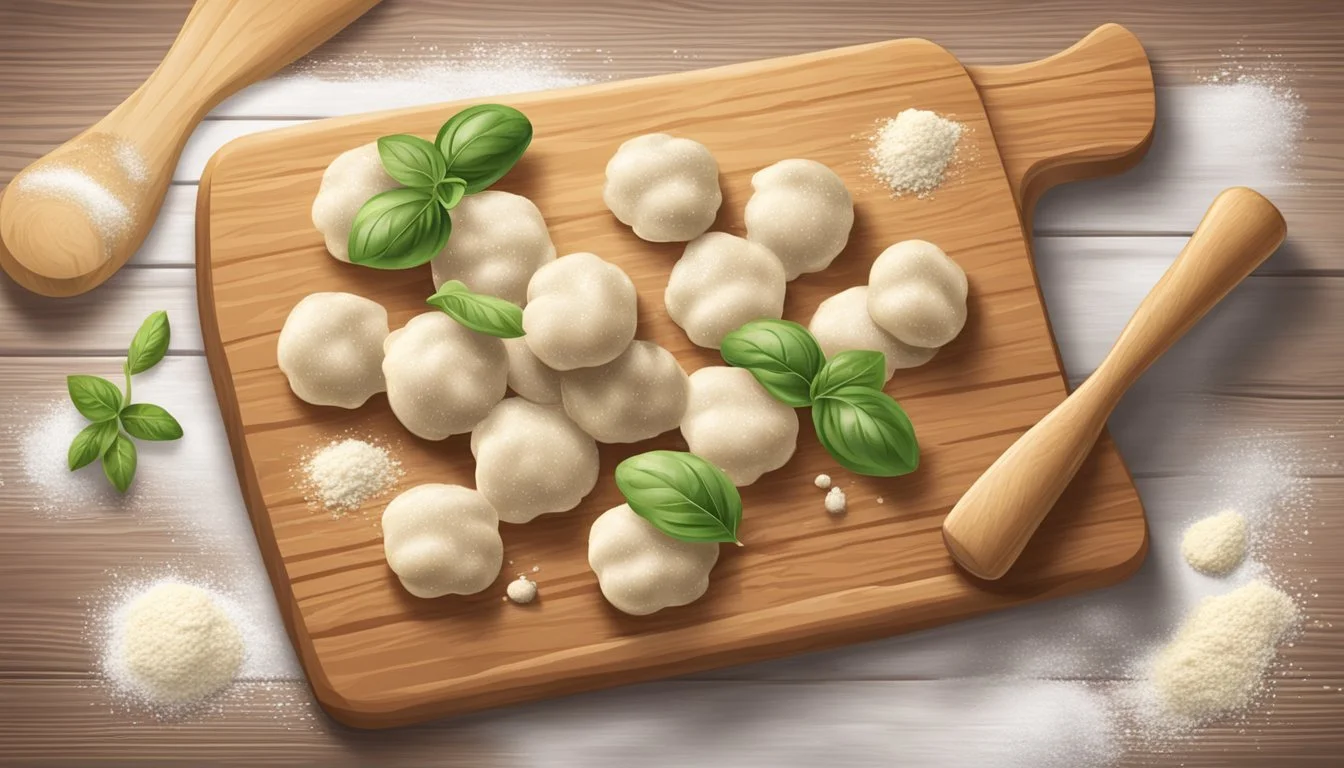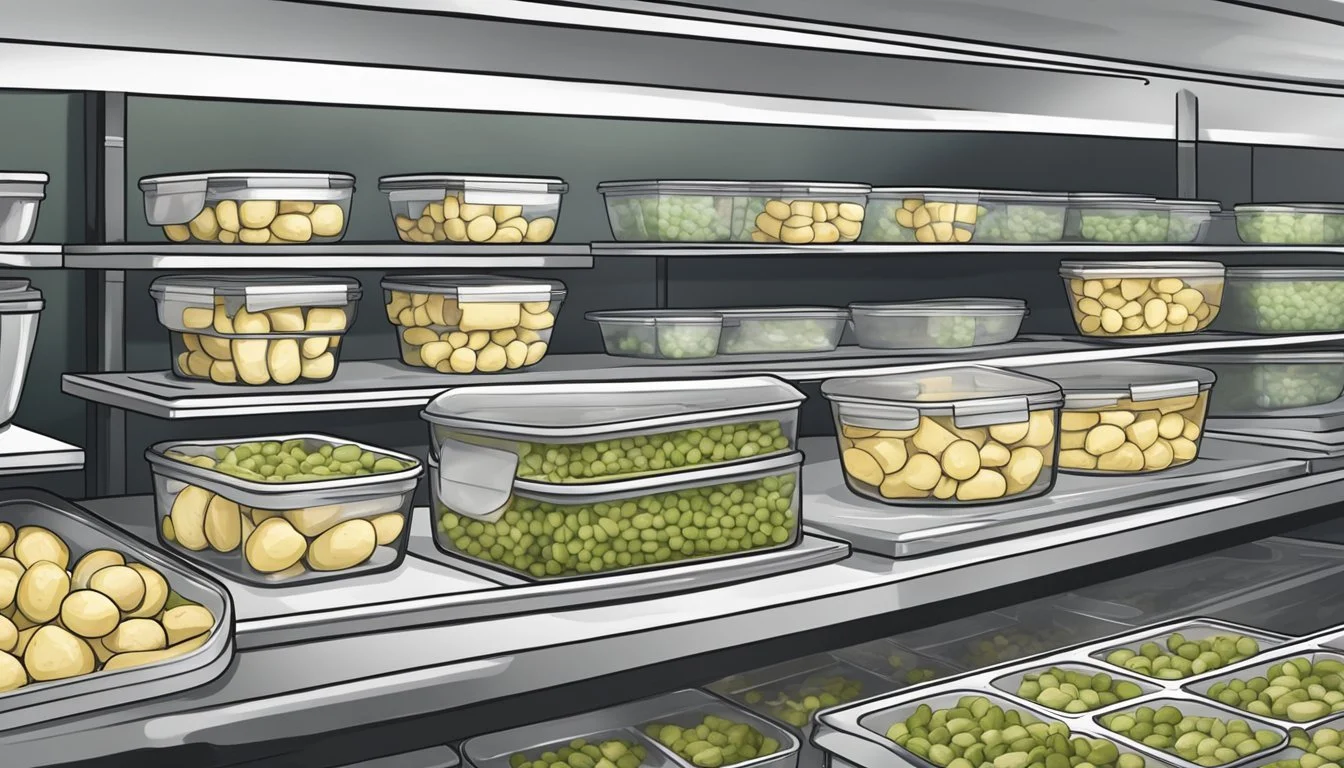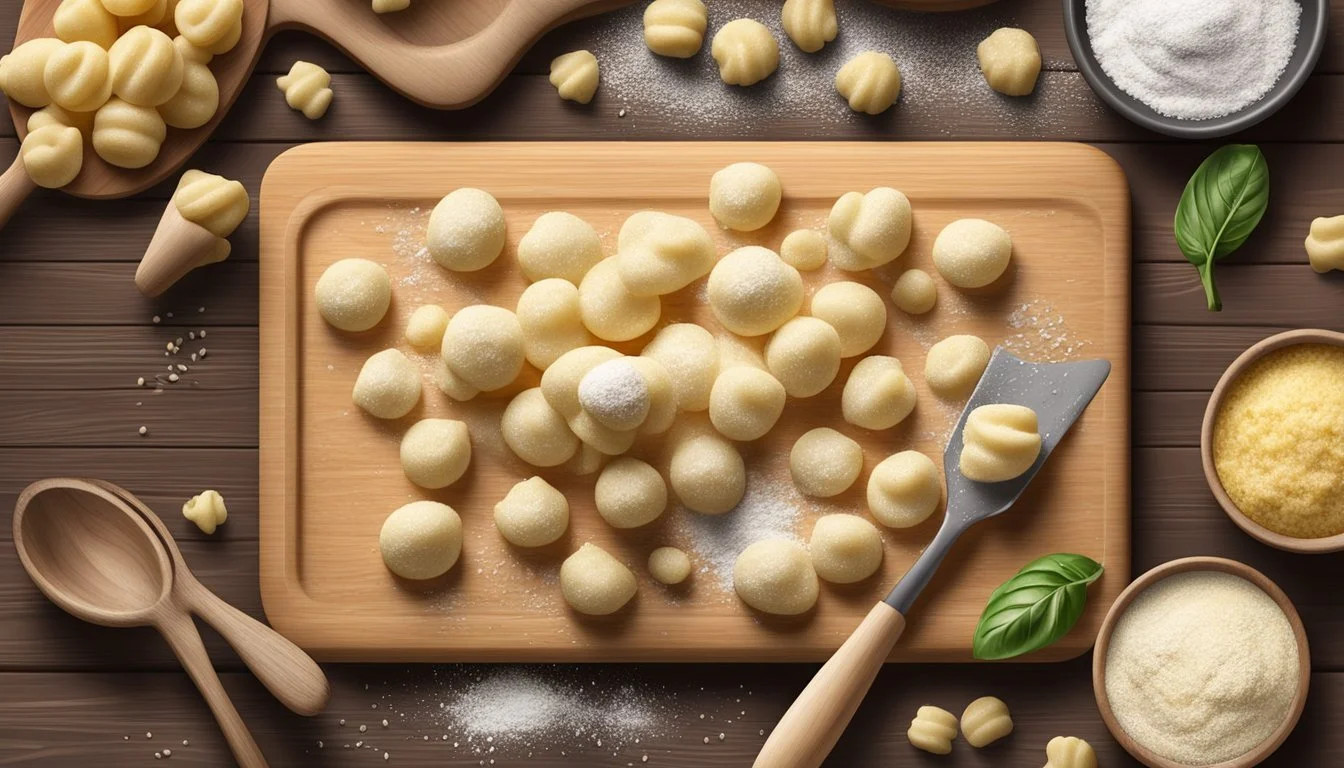How Long Do Freshly Prepared Gnocchi Last?
Shelf Life and Storage Tips
Gnocchi, a classic Italian pasta made primarily from potatoes, flour, and eggs, is cherished for its delicate, pillowy texture and versatility in dishes. Fresh gnocchi is at its best when enjoyed shortly after preparation, offering a superior taste and mouthfeel that can elevate any sauce or ingredient it is paired with. The shelf life of these soft dumplings is relatively short - they are generally recommended to be consumed within 1-2 days when stored in the refrigerator. This quick turnaround time underscores the emphasis on freshness that is synonymous with Italian culinary tradition.
Given their composition and the absence of preservatives, fresh gnocchi do not maintain their quality for long after they are made. Home cooks and chefs alike prioritize the immediate use of fresh gnocchi to capture their prime texture and subtle flavors. For those times when immediate consumption isn't feasible, freezing offers a practical solution. When frozen properly, gnocchi can be stored for approximately 1 month without a significant loss in quality, ensuring that the pasta remains firm yet fluffy upon cooking.
Understanding Gnocchi
Gnocchi are Italian dumplings known for their pillow-like texture and shape. Traditionally made from potatoes, flour, and an egg, they form a dough that is rolled into long cylinders and cut into bite-sized pieces. The characteristic ridges on gnocchi are not just for aesthetics; they help sauces cling to the dumplings.
There are variations to classic potato gnocchi, including ricotta gnocchi which incorporates ricotta cheese (how long does cheese last?) for a lighter texture, and cauliflower gnocchi, a recent favorite among those seeking a lower-carb option. The beauty of gnocchi lies in its versatility – it can be boiled, fried, or baked, and pairs well with a range of sauces and toppings.
Key Ingredients:
Potatoes: The starchy base that gives gnocchi its distinctive texture.
Flour: Provides structure to the dough.
Egg: Binds the ingredients and contributes to the dough's elasticity.
Preparing the Dough:
Potatoes are cooked until tender, then mashed or riced to ensure a smooth consistency.
The mashed potatoes are combined with flour and sometimes an egg to form a pliable dough.
After resting, the dough is shaped into small pieces, often impressed with a fork or a gnocchi board to create grooves.
Cooking Methods:
Boiling: Gnocchi are boiled until they float to the surface, indicating they're cooked through.
Frying: Adds a crispy exterior to the soft interior.
Baking: Often combined with sauces and other ingredients in a casserole-style dish.
When preparing gnocchi at home, attention to detail can make a significant difference. The right balance of ingredients and careful handling of the dough are crucial to achieving the perfect texture.
Fresh Gnocchi Storage Fundamentals
Proper storage is crucial to maintaining the quality and extending the shelf life of fresh gnocchi. It can be kept in both the refrigerator and the freezer, depending on how soon one plans to use it.
Refrigerator Storage
Fresh gnocchi should be stored in the refrigerator if it is to be used within 1-2 days. The key steps are:
Drain the gnocchi and let it cool to avoid condensation.
Lightly toss the gnocchi with a small amount of olive oil.
Place the gnocchi in an airtight container to prevent them from drying out.
This method helps to maintain the gnocchi's firmness and prevents them from sticking together.
Freezer Storage
For longer storage, freezing fresh gnocchi is the best option. Properly stored, gnocchi can remain fresh in the freezer for up to 2 months. Follow these instructions:
Lay the gnocchi out on a baking sheet in a single layer.
Freeze until firm, which usually takes about 3 hours.
After they are firm, transfer the gnocchi to a resealable freezer bag or an airtight container.
Remove as much air as possible if using a bag, or opt for a vacuum-sealed container to prevent freezer burn.
Label the container or bag with the date for reference.
By freezing gnocchi in this manner, they retain their texture and quality, ensuring they are as good as the day they were made when thawed.
Maximizing Shelf Life
To ensure freshly prepared gnocchi remain edible as long as possible, appropriate storage techniques focusing on temperature and moisture control are essential. These techniques can significantly prolong the shelf life of the gnocchi, keeping them safe for consumption and maintaining their quality.
Effects of Temperature and Moisture
Freshly prepared gnocchi are prone to spoilage due to the presence of eggs and dairy, making temperature control critical. Gnocchi must be refrigerated promptly to limit bacterial growth, with an ideal storage temperature of around 4°C (39°F). Moisture can also affect texture and lead to spoilage; hence, gnocchi should be stored in a manner to minimize moisture exposure.
Optimal Storage Conditions
To achieve optimal storage conditions, one should:
Refrigerate gnocchi within two hours of preparation.
Place gnocchi in an airtight container to protect against contaminants and moisture.
Freezing gnocchi can extend their shelf life to about one month. To freeze:
Lay them out on a baking sheet spaced apart and freeze until solid.
Transfer the frozen gnocchi to a freezer-safe airtight container or bag, squeezing out excess air.
Avoid freezer burn by ensuring the container is sealed properly.
Store in a cool, dry place within the refrigerator, away from the door to maintain consistent temperature.
Freezing and Thawing Processes
Properly freezing and thawing gnocchi is essential to maintain its quality and texture. This section outlines the specific methods to freeze gnocchi for optimal freshness and provides tips for safe thawing and reheating.
How to Freeze Gnocchi
To freeze gnocchi, one should arrange them in a single layer on a baking sheet lined with parchment paper ensuring they do not touch. They must be placed in the freezer and left to freeze until solid, which can take approximately three hours. This method prevents the gnocchi from sticking together and reduces the risk of freezer burn. Once frozen, the gnocchi should be transferred to airtight containers or resealable freezer bags, with as much air removed as possible to maintain freshness.
Thawing and Reheating Tips
When it comes to thawing, gnocchi can be cooked from frozen, thus eliminating the need for a separate thawing process. To reheat previously cooked and frozen gnocchi, it's recommended to warm them directly in a sauce or boiling water for a few minutes until they are heated through. Alternatively, one could use a microwave with a suitable container and heat them in short bursts, stirring occasionally to ensure even reheating. Caution must be taken not to overcook the gnocchi during the reheating process to prevent them from becoming overly soft or mushy.
The Impact of Storage on Quality and Safety
Proper storage is critical for maintaining the quality and safety of freshly prepared gnocchi. Texture, flavor, and freshness are all influenced by how gnocchi is stored, and signs of spoilage need to be identified promptly to ensure food safety.
Texture and Flavor Preservation
The texture and flavor of gnocchi are best when consumed fresh; however, storage methods can help to preserve these qualities to a certain extent. Refrigeration keeps gnocchi fresh for 1-2 days, but after this period, the dough might start to absorb odors from the fridge, altering its original flavor. Freezing is a more effective method for long-term storage, extending the freshness up to 1 month. To maintain optimal quality, gnocchi should be stored in an airtight container or a well-sealed bag to prevent freezer burn which can affect both texture and flavor.
Detecting Spoilage
When gnocchi has gone bad, several signs are evident. First and foremost, the presence of mold is a clear indication that gnocchi should not be consumed. Additionally, any off-odor or unexpected color changes can signal spoilage. If gnocchi has a sour or yeasty smell, it's likely unsafe to eat. It's essential to inspect the gnocchi carefully before cooking or consuming, both for the consumer's safety and to ensure a pleasant dining experience.
Prepared Gnocchi: Usage and Storage
When it comes to prepared gnocchi, both storage and proper reheating are essential for maintaining quality and safety. The guidelines provided aim to optimize gnocchi’s texture and flavor post-cooking.
Storing Cooked Gnocchi
After cooking, gnocchi should be handled with care to ensure it maintains its texture and taste:
Cooling: One should allow gnocchi to cool to room temperature before storing to prevent condensation and sogginess.
Refrigeration:
Transfer the cooked gnocchi to an airtight container.
Drizzle a small amount of olive oil and gently toss the gnocchi to prevent sticking.
Store cooked gnocchi in the refrigerator and consume within 1-2 days.
Freezing:
For longer storage, arrange the cooked gnocchi in a single layer on a baking sheet.
Freeze until solid, then transfer to a freezer bag or container, and use within 2 weeks for optimal quality.
Reheating and Serving Suggestions
When reheating cooked gnocchi, one should aim for it to regain its original texture without becoming mushy:
Microwave: Place gnocchi in a microwave-safe dish, cover with a damp paper towel, and heat on medium power, checking every 30 seconds.
Stovetop: Reheat gnocchi by sautéing in a pan with a bit of butter or olive oil until warmed through.
Serving:
Gnocchi pairs well with diverse sauces—from a classic tomato sauce to a rich cheese sauce or a simple garlic and olive oil dressing.
For leftover gnocchi, consider tossing them into soups or salads for a hearty addition to the meal.
Additional Considerations for Gnocchi Longevity
When assessing the shelf life of gnocchi, one must consider both the ingredients used and whether the gnocchi is homemade or commercially produced, as these factors greatly influence longevity.
Ingredients and Types Impact
The composition of gnocchi dough significantly affects its shelf life. Potato gnocchi, for example, uses starchy potatoes and is often the most common type found in both homes and grocery stores. Fresh potato gnocchi usually last 1-2 days in the refrigerator. Ricotta gnocchi, made with ricotta cheese, may have a slightly longer fridge life due to the preservative effect of the cheese's acidity and salt. Variants such as semolina or wheat flour gnocchi, and those incorporating cornmeal, might also exhibit varying degrees of shelf stability. However, regardless of type, exposure to air and moisture will hasten spoilage.
Type Refrigerated Shelf Life Freezer Shelf Life Potato Gnocchi 1-2 days Up to 1 month Ricotta Gnocchi 2-3 days Up to 1 month Semolina Gnocchi 2-3 days Up to 1 month Cornmeal Gnocchi 2-3 days Up to 1 month
Commercial vs. Homemade Gnocchi
Shelf life also varies between homemade and commercial variants. Homemade gnocchi should be eaten within a couple of days when refrigerated, or they can be frozen to extend shelf life up to one month. In contrast, vacuum-packed gnocchi found in stores typically have preservatives, allowing them to last longer even at room temperature until opened. Once opened, they should be stored in the refrigerator and consumed within the time frame similar to homemade varieties. Always check the packaging for the best-before date and storage instructions to maximize freshness and safety.
Gnocchi Type Room Temperature Refrigerated Frozen Homemade Not recommended 1-2 days 1 month Vacuum-Packed See package date 3-5 days As per homemade
Remember that these timelines are guidelines; always inspect the gnocchi for signs of spoilage, such as mold or off smells, before consuming.
Conclusion
Freshly prepared gnocchi should be consumed quickly to maintain its quality and taste. As a delightful Italian dish and popular comfort food, gnocchi is best when its texture is soft and pillowy. When storing gnocchi, one should keep it in the refrigerator for 1-2 days; beyond that, the texture and flavor can deteriorate.
For those who have made a large batch and wish to preserve it, freezing is an ideal option. Properly frozen gnocchi can last up to 1-2 months. It is crucial to ensure that the gnocchi is placed in an airtight container or a sealed freezer bag to prevent freezer burn and dehydration.
When considering nutrition, gnocchi can be a wholesome side dish. It typically contains ingredients rich in carbohydrates, like potatoes and flour, and may include eggs and cheese, providing protein and other nutrients. However, the nutritional value can depend on the specific recipe used and the serving size.
In terms of cooking, thawed or refrigerated gnocchi can generally be cooked in boiling water within 2 to 5 minutes, making for a quick and convenient meal option.
For the best experience, always keep track of storage times and conditions, and enjoy gnocchi while it's fresh or adequately preserved.






